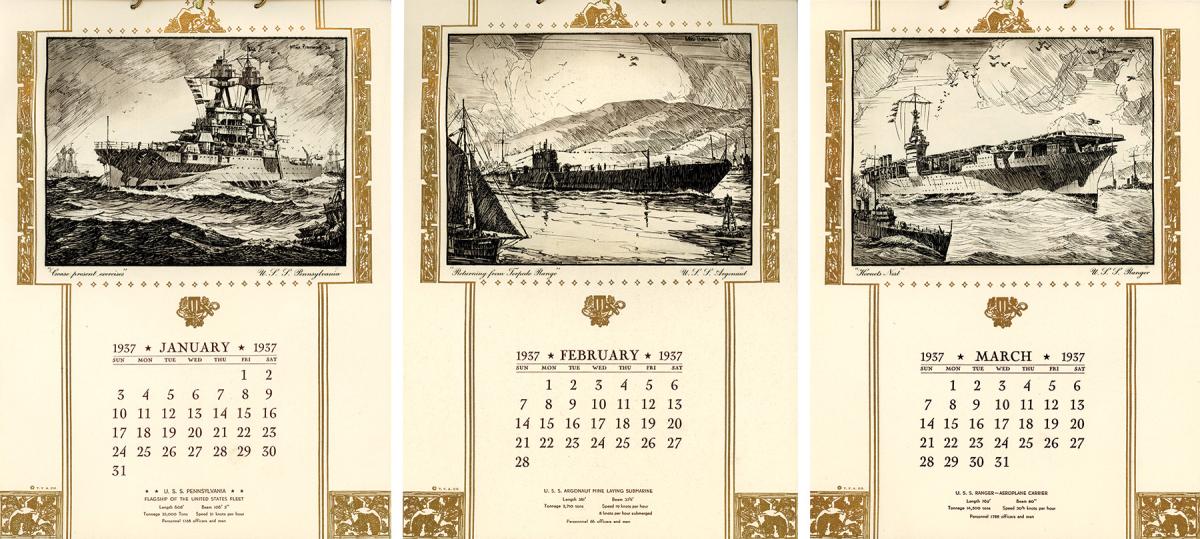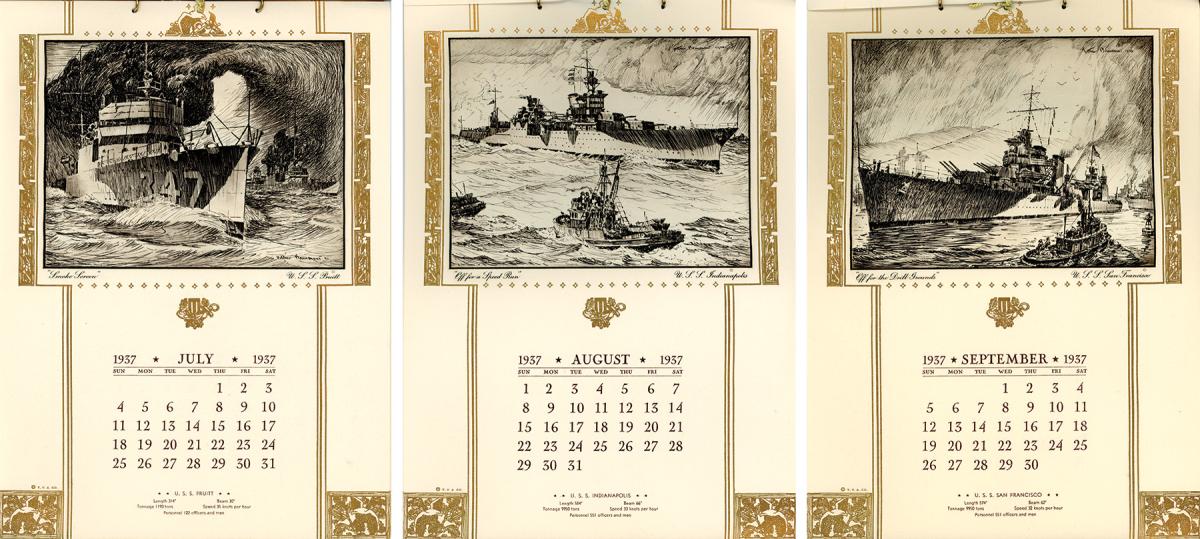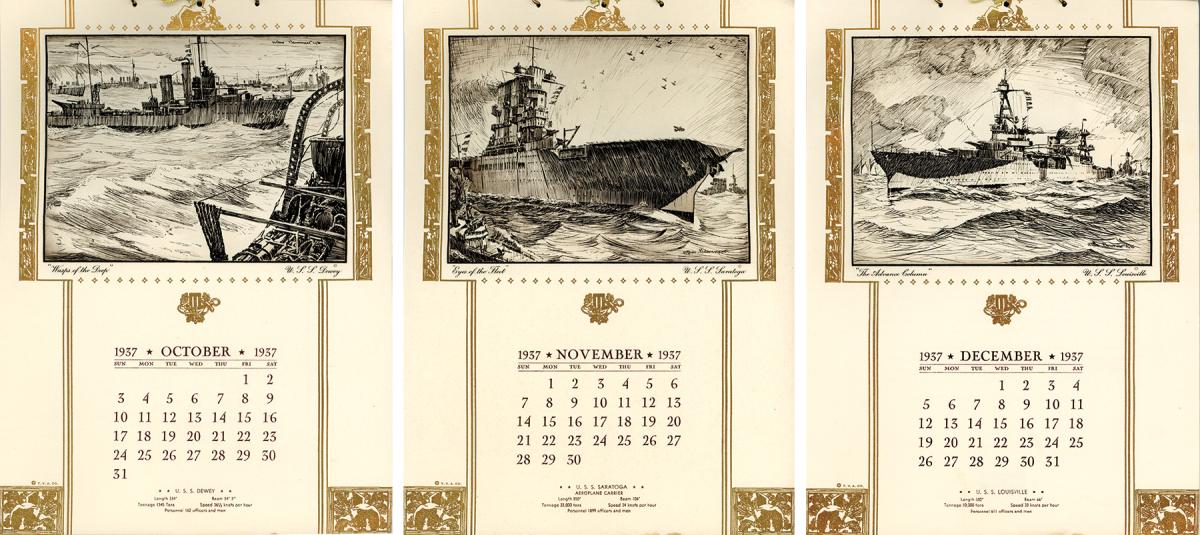There are naval artists, and then there are Navy artists—painters who ply their talents in an official capacity while in uniform. Such was the longtime role of one of nautical art’s shining lights: Arthur “Beau” Beaumont, whose works continue to resonate for gallery-goers to this day. He was an up-and-comer seeking his fame and fortune in 1930s Southern California when he was commissioned to paint the portraits of Admiral Frank Schofield, Vice Admiral Thomas T. Craven, and Rear Admiral William D. Leahy. According to navyart.com, while he was having his portrait painted, “Leahy surprised Beau by posing the question, ‘Beaumont, why aren’t you in the Navy?’”
Leahy was hoping to find the next big U.S. Navy artist, the heir apparent to the late, great Henry Reuterdahl (see “The Navy’s Artist of Reform,” June 2022, pp. 34–39). Beaumont jumped at the opportunity and was commissioned in 1933 as a lieutenant in the U.S. Naval Reserve as the Navy’s official “Artist of the Fleet.” It was the start of a long and fruitful relationship that lasted for 45 years. Beaumont’s first big splash in his new role, “Our Glorious Navy,” was unveiled to great fanfare in Los Angeles and became a popular traveling exhibition that was viewed from coast to coast.
Traveling on capital ships of the fleet, Beaumont sketched and painted prolifically. His fame grew. He rubbed elbows with director John Ford (a fellow Navy devotee), who got him work in Hollywood painting set backdrops and movie posters. National Geographic published a sampling of Beaumont’s remarkable watercolors. In fact, examples of Beaumont’s watercolor ship paintings are among the stunning standouts in the U.S. Naval Institute’s art collection.
And the Institute’s Beaumont holdings recently grew, quite unexpectedly, with a donation to the archives of a 1937 U.S. Navy Fleet Calendar. It is, in essence, a portfolio of top-notch ship portraiture from the Artist of the Fleet himself. Here we see the pre–World War II Navy vividly and beautifully depicted. (The USS Ranger [CV-4]), the illustration for March, is charmingly referred to as an “aeroplane carrier.”) Some calendars are so visually appealing that there’s a thrill of delight when you flip over to each successive month. Some calendars, as a year winds down, are tough to bid farewell to. And Beau Beaumont’s 1937 Fleet Calendar is the ultimate example of a calendar that, long past its relevant year, forever remains a real keeper.
—Eric Mills











